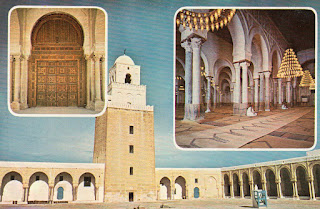Diyarbakır is surrounded by an almost intact set of high walls of black basalt around the old city. There are four gates into the old city and 82 watch-towers on the walls.
 |
| Diyarbakır Fortress |
This postcard was sent by Muammer
The Diyarbakır Fortress and Hevsel Gardens Cultural Landscape is located on an escarpment in the Upper Tigris River Basin. The fortified city with its associated landscape has been an important centre and regional capital during the Hellenistic, Roman, Sassanid and Byzantine periods, through the Islamic and Ottoman periods to the present. The property includes the impressive Diyarbakır City Walls of 5800 metres – with its many towers, gates, buttresses and 63 inscriptions from different historical periods; and the fertile Hevsel Gardens that link the city with the Tigris River and supplied the city with food and water. The City Walls, and the evidence of their damage, repair and reinforcement since the Roman period, present a powerful physical and visual testimony of the many periods of the region’s history. The attributes of this property include the İçkale (Inner Castle), Diyarbakır City Walls (known as the Dişkale or Outer Castle), including its towers, gates and inscriptions, the Hevsel Gardens, the Tigris River and Valley, and the Ten-Eyed Bridge. The ability to view the walls within their urban and landscape settings is significant, as are the hydrological and natural resources that support the functional and visual qualities of the property. - in: https://whc.unesco.org/en/list/1488





































